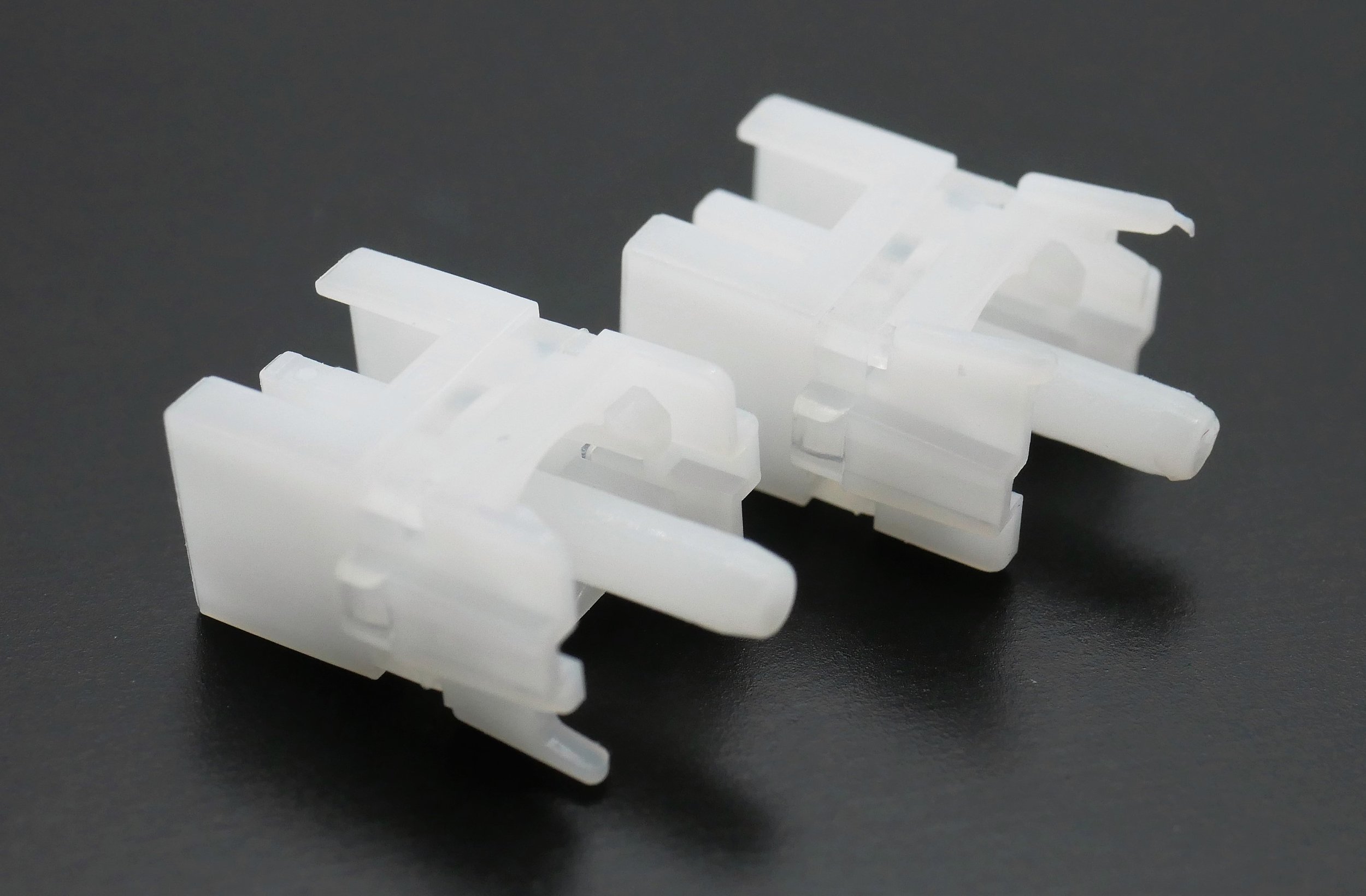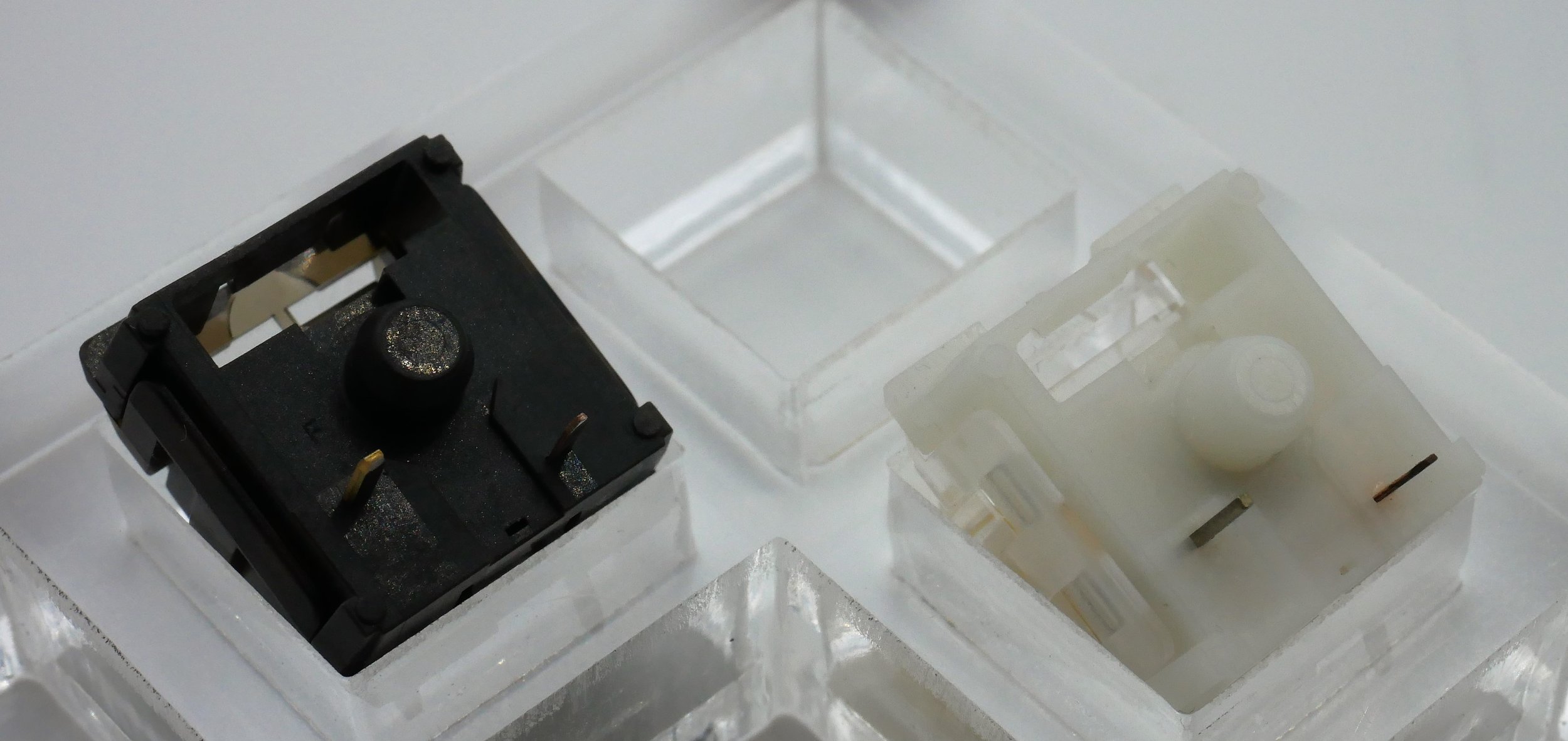Odd Switch Short I: HAPE Orange
One of the main drivers behind starting up regular short length written content was the rapidly growing list of rarely seen, unique, and downright bizarre switch details that I was accumulating alongside the piles of stuff waiting to be added to the collection. Often times, the most interesting of these switches with never-before-seen designs and/or technologies happen to be ones ripped straight from China with less than zero background to them whatsoever. Combine this with the fact that my entire brand identity is built around verbosity and over the top levels of detail about switches, these oddities often don’t make the cut for full length reviews and can (and in many cases do) get relegated to the deep recesses of my mind until someone prods me for switch-related trivia. Well no more! This will be the first of hopefully a long series of shorts picking at one or two interesting details of switches that would otherwise be forgotten to the sands of time.
First up on the docket of ‘Odd Switches’ is one that has actually made a few appearances now on my Instagram across the last few weeks: HAPE Oranges. Colored in this incredibly standout peach-y orange color, I picked up a small 10-bag of these ‘LICHICX’ branded silent linears from an Aliexpress storefront which has seemingly since been scrubbed from the earth entirely. Without any clue as to who LICHICX, or as I have erroneously referred to them as ‘LICHIEX’, is, these switches sat entirely unopened in my recent additions pile without much of a thought given to them. However, SwitchOddities reached out to me after receiving his small batch for his collection/storefront and encouraged me to open them up and actually see what was going on. Following his request, I cracked open these silent linears to find stems that look like this:
Figure 1: Front and back side design of HAPE Orange stems.
Those of you who are well versed with your switch silencing mechanisms (or those who have recently read my Kinetic Labs Gecko Switch Review) will likely immediately notice there is no silencing mechanism present on the slider rails of the stem. No squishy dampening pads sit on top of, below of, in, nor around this part of the stem traditionally dampened in silent linears and tactiles. Clearly, then, there must be some sort of dampening system in the bottom housings just like that of Kailh’s recent Midnight Pro Silent series.
Figure 2: And in the HAPE Orange bottom housings we have... no silencing mechanism.
What we are presented with here is very clearly a silent linear switch which appears to operate on witchcraft, and therefore must also be a duck because the components are light enough to float in water. To break this illusion, however, I want to point to the unique and secretive mechanism leading to this dampening of the HAPE Oranges which lies in the thin strip of alternatively colored plastic which runs around the center of the stems as can be seen above.
Seemingly made of a slightly softer and more pliable plastic (or wood...?) than the surrounding stem design, this softer plastic insert stretches across the entirety of the stem cross section, and can also be poked at around where the center pole connects to the main body of the stem. And therein lies the secret. Instead of bottoming out onto the slider rails, or onto the center pole, the HAPE Orange switches actually bottom out onto the rim of the center pole hole in the bottom housing. In doing this, the perimeter of this center pole hole presses into the softer middle layer of the stems and effectively acts as a dampening mechanism in the same way that traditional soft pads on the bottom of slider rails do. To the best of my knowledge, this is the first instance of a modern, MX-style switch not only intentionally bottoming out onto this weird spot in the design, but further leveraging this in order to create a dampening mechanism.
Without much more information surrounding the HAPE Orange switches and their unfortunate rapid exit from any and all storefronts, we are more or less left in the dark entirely about any of the interesting questions which spawn out of this unique mechanism. The ‘Who’, ‘What’, and ‘Where can I buy more of these, please why the hell did you discontinue them so quickly’ all will remain more or less unanswered. There are, however, two routes forward for the collective shared curiosity about this mysterious ‘LICHICX’ brand, though which you choose to subscribe to is a bit dependent on your tolerance for conspiracies. The high level, much more boring option would be to go check out the LICHICX Green Mustard switches, a smoky black and wasabi green colored successor to the HAPE Oranges which are still available as of the time of writing this review, to the best of my knowledge. Strapping on the tin foil hats, though, it has been suggested by SwitchOddities that there is some connection between LICHICX and Varmilo, another company whose manufacturer for their EC line of switches has long been a mystery. Don’t believe me? Maybe this will get that X-Files theme song going in the back of your head:
Figure 3: Underside of LICHICX Green Mustard and Varmilo EC Daisy V2 showing identical mold marking location and small cutout between metal PCB pins.
Figure 4: LICHICX Green Mustard and Varmilo EC Daisy V2 top sides showing identical stem design and top housing designs. (It is worth noting the housings are also easily interchangeable, as well.)
Figure 5: LICHICX Green Mustard and Varmilo EC Daisy V2 side profile showing identical general shape and protrusion of keycap mounting stem above the dustproof stem walls.




